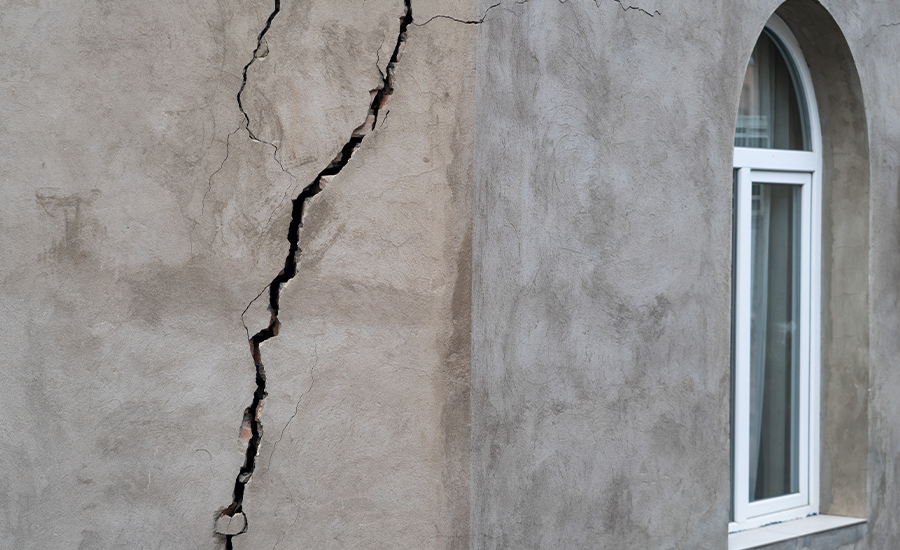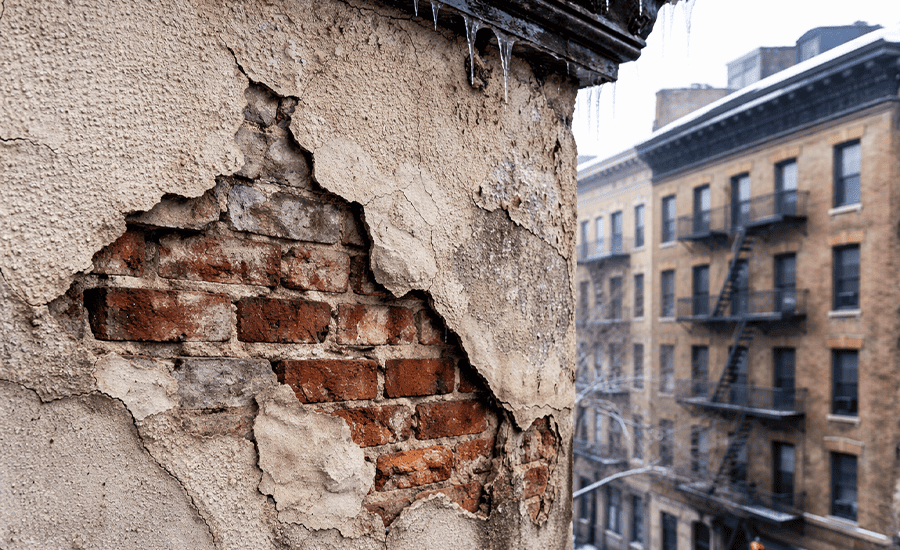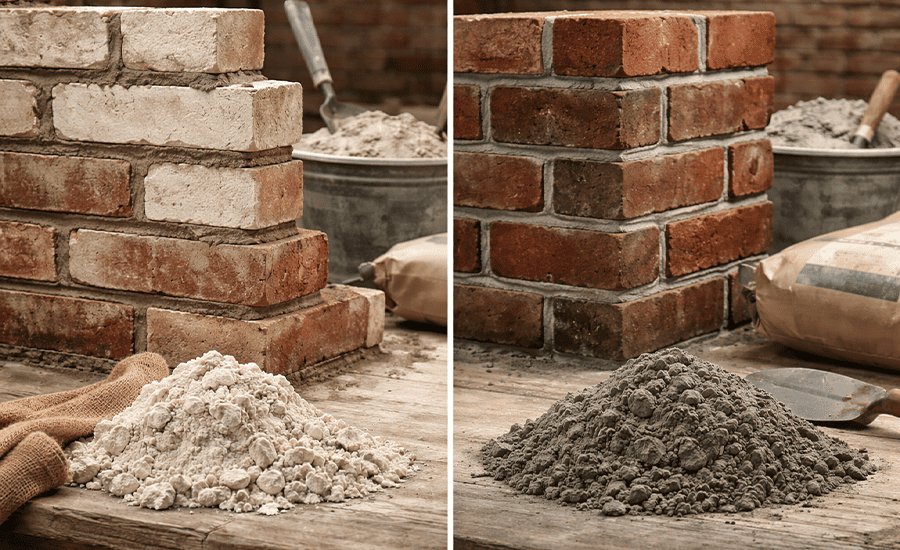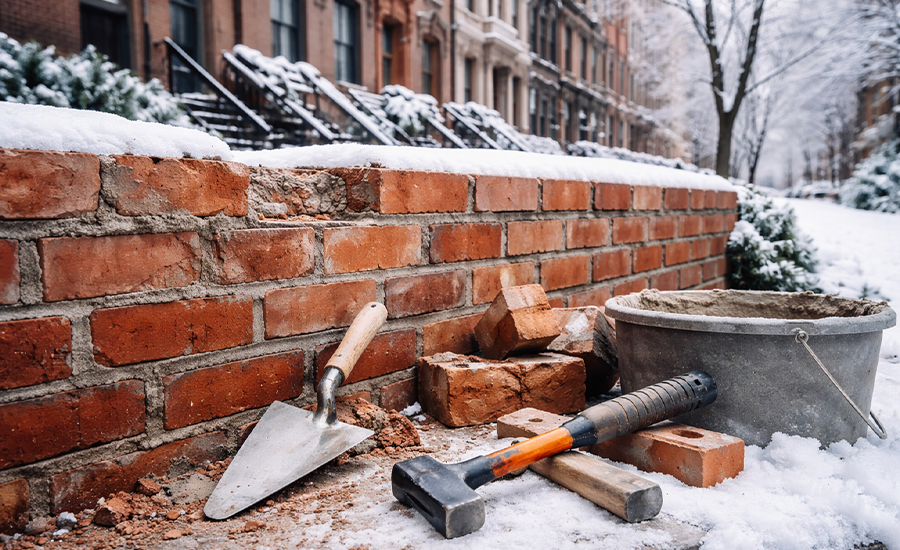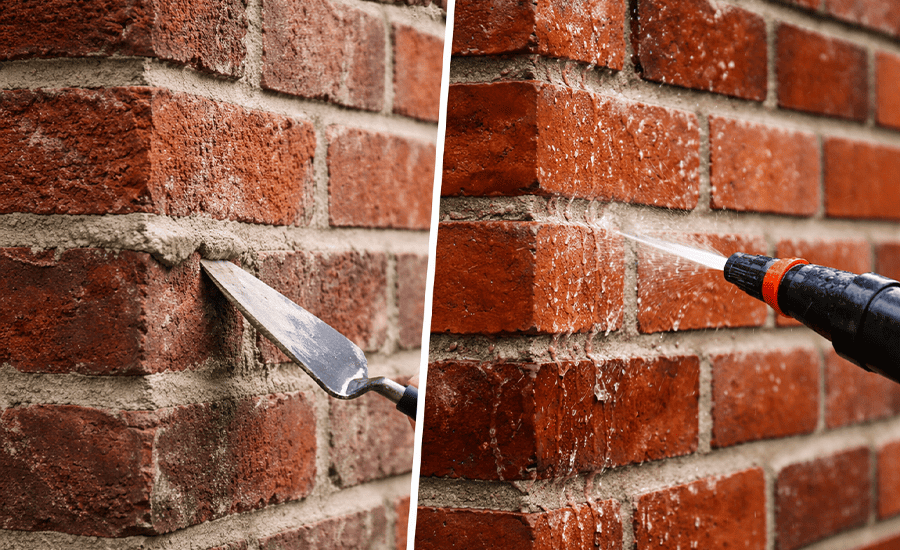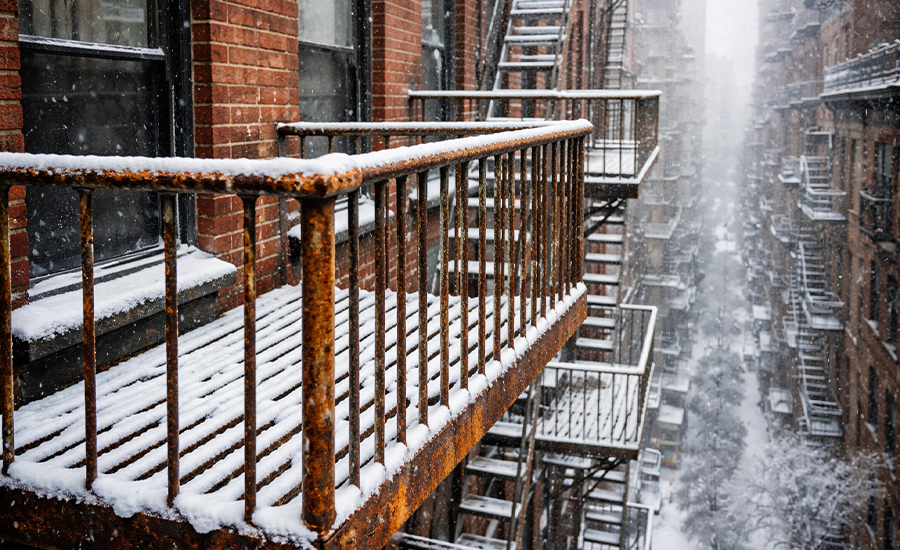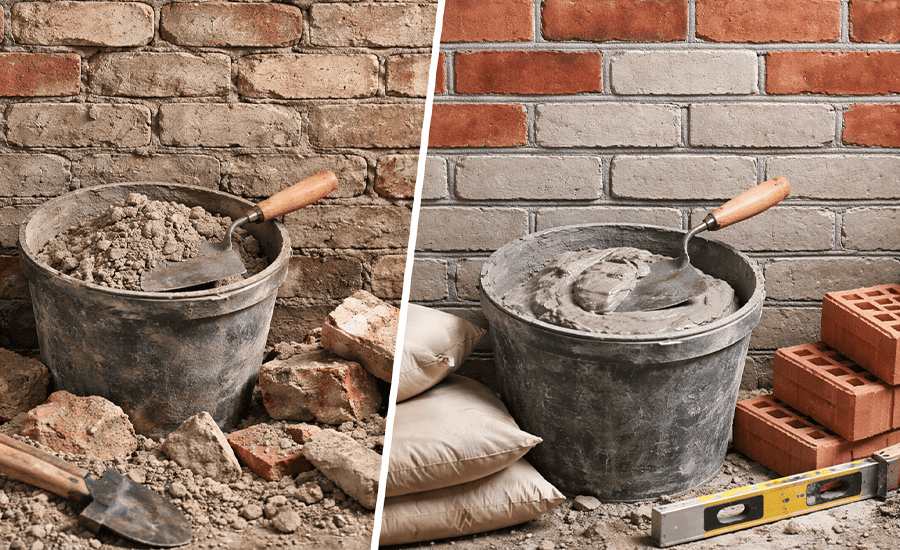Stucco is known for its architectural beauty and finishes, which enhance the appearance of your residential and commercial properties. Stucco possesses some great features that offer lasting strength, longevity, and water repellency that keep your property protected for decades. When winter arises or is about to come, cracks in the stucco start appearing, due to which water and moisture seep into the bricks and concrete, which leads to fungal growth and sagging of the building. But one thing that strongly binds the Stucco is that you should use appropriate types of Stucco on historic and contemporary properties. Make sure to apply Stucco to the walls before winter, as spring and fall are the best seasons for proper mortar curing, which prevents masonry expansion and contraction and insulates the interior of your property. It’s advisable to install Stucco before winter to avoid cracks and structural fissures.
In this blog, we’ll thoroughly discuss the composition of Stucco, its application in winter, the damage it can sustain from extreme cold, and tips for preventing it.
Stucco Basics: What You Need To Know
The composition of Stucco is:
- Portland cement
- Sand
- Lime
- Water
We make the formulation of all the materials according to your property and apply it layer by layer and wait until it gets hard and properly cured, ensuring the moisture evaporates with time and the Stucco becomes structurally sound.
Temperature affects:
- Low temperature results in slow curing and drying of Stucco.
- Too much cold temperature results in improper curing and weak stucco adhesion.
- Stucco installation in mild temperatures, like in spring, offers proper curing on time.
- Moisture retained in the stucco results in expansion, causing surface cracks and structural stress.
Why Does Winter Speed Up Stucco Damage?
The following factors play an integral role in damaging the Stucco rapidly in winter.
Sudden Temperature Swings
In winter, the temperature experiences variations in night and daytime from mild to cold, which leads to expansion and contraction in the Stucco.
Example:
| Thermal Behaviors | Damage to Stucco |
|---|---|
| Night freezes | Stucco shrinks & surface tightening |
| Daytime thaw | Surface stretching |
| Cyclic temperature stress | Internal strain damage |
Important Highlights:
- Stucco has limited flexibility.
- Even a few degrees of temperature change can cause visible cracking over time.
Weak Curing Due to Cold
- For proper curing, Stucco needs a temperature range of 50°F–70°F (10°C–21°C).
- When it’s applied below 40°F, the hydration reaction slows and the surface hardens unevenly.
Frequent Problems:
- Weak bonding between cement particles
- Poor strength development
- Cracking once the material dries
- Internal damage may occur if freezing happens before complete curing
Thermal Expansion & Water Absorption
Water is Stucco’s worst enemy during winter. Even a small amount trapped inside pores or hairline cracks can freeze and expand.
What leads to the Volume:
- Pressure buildup inside the Stucco.
- Widening of existing cracks.
- Gradual disintegration of the surface.
Foundation Thermal Response
Stucco is usually applied over:
- Wood framing.
- Metal lath.
- Concrete or masonry.
Each material reacts differently to temperature changes:
- Wood shrinks in the cold.
- Metal contracts and expands rapidly.
- Masonry holds cold longer.
When these materials move differently beneath the Stucco, it creates uneven stress that causes surface cracking, especially near:
- Corners
- Windows
- Doors
- Expansion joints
Improper Cold Weather Installation
Applying or repairing Stucco in cold weather without proper precautions can cause significant problems.
Common missteps to avoid:
- Adding excess water to make the mix workable in cold air.
- Applying Stucco when temperatures are below 40°F.
- Not using heated enclosures or insulating blankets during curing.
- Letting the surface freeze overnight.
Top Signs Your Stucco is Damaged & Affected By Cold
Let’s have a look at the frequently occurring problems that can cause winter-related damage:
- Structural fissures and cracks appear on the wall.
- Holes and stair-step cracks near openings.
- Spalling, brittle, and crumbling texture of the Stucco.
- Moisture Stains and biological growths on the stucco walls.
- While chalky residue appears on the walls (efflorescence).
- When you tap or knock on the wall, it starts sounding hollow.
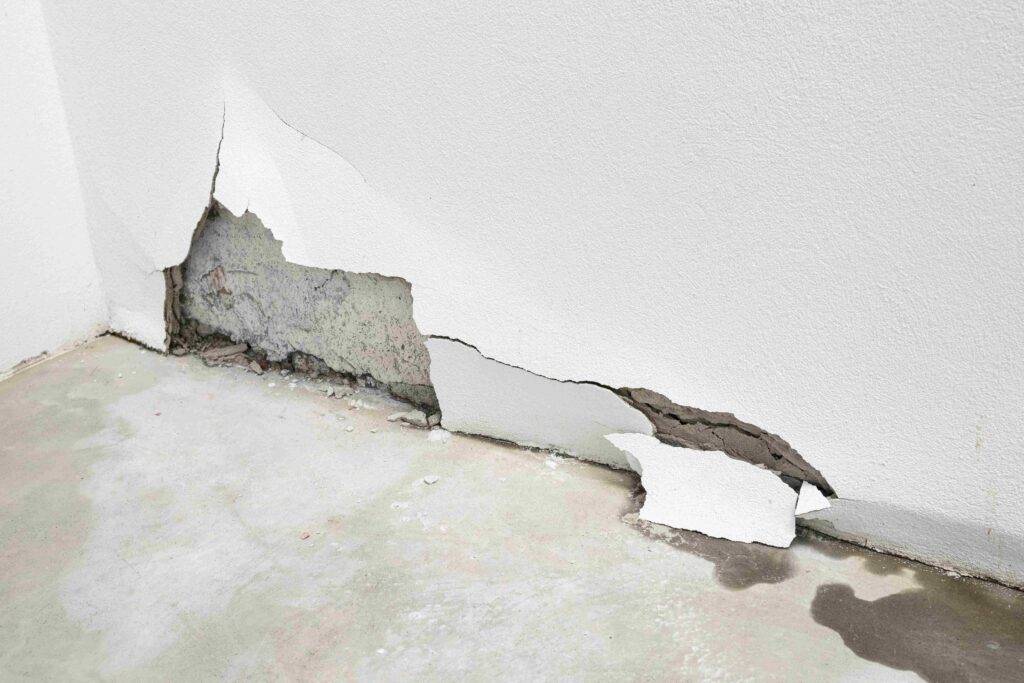
How to Keep Stucco Intact During Cold Weather?
The winter season can be threatening to your Stucco, but preventing your Stucco from catching a cold can be very effective and reduce the risk of structural fissures and blisters. Here is the list of practices you can implement for protection from the harshest winters:
Refrain from Work In Freezing Weather
- Make sure the weather is above 60°F when you’re working.
- Don’t apply Stucco when it’s below 40°F.
- Make sure to use warps, tarps, and green tents for curing if your work is still not complete.
Ensure All Surface Cracks are Sealed
- Conduct a thorough Inspection in spring and late fall.
- Make sure to apply waterproofing & breathable sealants to prevent water penetration and cracking.
- Prevent water from seeping in before freeze-thaw damage occurs.
Maintain Effective Water Runoff
- Check gutters, downspouts, and flashing.
- Make sure of excellent water channeling.
- Keep an eye on the snow buildup, ensuring to remove it near the foundation.
Recoat With A Waterproof Barrier
Make sure to recoat the Stucco with the following two coatings, i.e.:
- Silicone-based sealant
- Acrylic elastomeric paint
Improve Thermal Insulation
Make sure the Stucco is adequately cured, so it provides insulation to the inside of the walls, ensuring a maintained temperature that reduces stress on stucco layers.
Have Your Stucco Checked By a Professional
Make sure to contact a professional stucco repair contractor in NYC, so they can:
- Detect the early signs of freeze–thaw damage.
- Address the underlying causes and repair cracks before they entirely deteriorate.
- Repaint the Stucco for added protection and finishes.
Seasonal Upkeep Tips for Stucco Homes
To keep your Stucco well-maintained and visually striking, follow these upkeeps to:
- Inspect walls annually before winter.
- Repaint or reseal Stucco every 5–7 years.
- Keep snow, ice, and salt away from the wall base.
- Maintain expansion joints to handle movement.
- Fix roof or gutter leaks immediately.
- Use dehumidifiers indoors to reduce condensation behind walls.
Conclusion
Stucco may look strong, but cold weather can slowly weaken its structure. Regular inspection before winter ensures early crack detection. Recoating with waterproof barriers helps retain durability and beauty. With consistent care, your stucco walls can stand firm through every season without losing charm.
Sardar Restoration Corp proudly serves every corner of NYC, including the Bronx, Manhattan, Brooklyn, Westchester, and Queens. Our services are designed to meet your specific needs, providing top-quality solutions wherever you are. Check our service areas to see how we can assist you in your location.
Contact us today at (+1) 917-355-8556 or sardarrestoration@gmail.com, or visit us at 2770 Fish Ave, Bronx, NY 10469, United States.
FAQs
Do you repair stucco cracks caused by cold weather?
Yes! Sardar Restoration Corp. offers stucco crack repair services, ensuring proper servicing of cracks from minor hairlines to major structural cracks by formulating weather-appropriate mortars that guarantee promising outcomes.
Do you offer protective coatings for Stucco before winter?
Yes! Sardar Restoration Corp. offers protective, water-resistant, and breathable coatings after stucco installation, ensuring prevention from water infiltration and environmental wear & tear while providing a cohesive finish.
Can you inspect my Stucco before winter starts?
Yes! Sardar Restoration Corp. offers seasonal inspections before winter starts to help detect early damage, as it prevents hefty repairs. We make sure to get your stucco property compliant and up to code.
Can frozen moisture cause stucco to break off?
Yes, when trapped moisture freezes, it expands and pushes out small stucco chunks, leading to surface flaking and deeper cracks.
Should I repair stucco cracks before winter begins?
Absolutely, fixing small cracks early prevents water from freezing inside them, avoiding costly repairs during or after winter.
Do you work with both residential and commercial properties?
Yes! Sardar Restoration Corp. offers stucco crack repair services in both residential and commercial properties, ensuring to meet each property’s unique winter protection needs.


